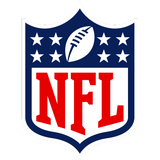
Green Bay Packers Howard 'Cub' Buck solid 10

With only days left until the Green Bay Packers kick off the NFL season, this countdown to the big day continues.
Sunday, Sept. 11, is the day when the Green Bay Packers travel to Jacksonville to take on the upstart Jaguars.
Most recently, we took a look at number 11, Red Dunn, the quarterback who took over after Curly Lambeau and helped lead the Packers to championships in he late 1920 to early 1930s.
And as we move on to #10 we look at players with little historical impact on the team.
Aside from Jan Stenerud and Lynn Dickey, who changed his number to 12 in 1980, there are players on this list who were just guys.
Consider Jack Concannon, Al Del Greco, Jeremy Ross, Matt Flynn, and Chris Harper. I wouldn’t get too excited about any of them.
So, who was Howard “Cub” Buck?
Let’s find out …
The 1920 Green Bay Packers. Courtesy of packershistory.net
Howard “Cub” Buck
So once again we’ll turn to John Maxymuk, the author of “Packers by the Numbers: Jersey Numbers and the Players Who Wore them,” who tells us about a player who played a single season wearing number 10 – Howard “Cub” Buck.
Here is how Maxymuk describes Buck’s time with the Packers:
There’s a reason the Pro Football Hall of Fame is housed in the small Ohio town of Canton. In the pre-NFL Jurassic Era of professional football, Canton was a giant in the town-tam football prevalent at the time.
Lombardi Ave 1 wGreen Bay Packers: Masthay vs. MortellMore headlines around FanSided:
1 w - Green Bay Packers: Should Jordy Nelson feature in preseason?1 w - 2017 NFL Mock Draft: Prior Trades Come Up Big1 w - Green Bay Packers: Remembering #20 Allen Rossum1 w - Green Bay Packers best offseason moves: Hiring Brian Angelichio2w - Green Bay Packers best offseason moves: Datone Jones transition to full-time edge rusherMore News at Lombardi Ave
The Canton Athletic Club forms a team in 1905 that would become known as the Bulldogs and would begin a fierce rivalry with the cross-stat Massillon Tigers. In 1906 the two teams split a par of games between them, but the Tigers won the coveted Ohio State title and were known as the bet pro tam in the nation.
Financial instability and a betting scandal caused interest in pro football to dwindle at the time, but things began to improve in the teens. The bet football player in the country, Jim Thorpe, signed with Canton in 1915 and the Bulldogs went on to win the Ohio League Championship in 1916, 1917, and 1919.
By the next decade, the problems of free-form, freelance professional football led to the organization of the American Professional Football Association in the showroom of a Canton auto dealer in August 1920.
Two years later, the league would change its name to the National Football League. The Canton Bulldogs would win the NFL title in 1922 and 1923, but would be defunct by t 1927 as the league outgrew its small-town roots everywhere but Wisconsin.
One of Thorpe’s lading blockers in Canton was Howard “Cub” Buck, a mountainous tackle weighing in the range of 280 pounds in a period win 22 pounds ws considered very big. Buck had been an All American at the University of Wisconsin before joining Canton in 1916. In that season, h coached the line for the Badgers at his alma mater during the week and on Sundays would meet up with his Bulldog tam mat for the professional game. In 1917, h became head football coach at Carleton College in Minnesota and continued with his bifurcated career.
More from Lombardi Ave
- Josh Sitton, Green Bay Packers guard, gone but not forgotten14m ago
- DT Mike Daniels deserves more recognition18h ago
- Green Bay Packers safety Ha Ha Clinton-Dix has huge upside18h ago
- Green Bay Packers’ 53-man roster prediction2d ago
- Packers: Will the Aaron Rodgers-to-Jared Cook Connection Work?2d ago
In 1921 the Green Bay Packers joined the new league and Curly Lambeau signed Buck s his first del professional player at $75 a game. The 1919 and 1920, versions of the Packers were essentially professional town teams made up of local players. Although Buck was a native of Eau Claire and had played college ball at UW, he was a five-year veteran of professional football ball who brought credibility to the franchise and provided n actor to the line. And for that money, he also worked s the line coach.
Cub Buck is the only interior lineman/punter in team history s well as the only interior lineman/drop-kicker, although Tiny Engebretsen, Ernie Smith and Jerry Kramer all were linemen/place kickers. Cub scored 54 points for Green Bay on 24-of-35 extra points and 10-of-28 field gold.
He led the team in scoring in 1923 and even threw a touchdown pass in 1924.
In 1923 Buck took on the head coaching job at Lawrence College, and he would stay there for his last three years as a Packer. Cub accepted the head coaching position at the University of Miami in 1926 and retired as a professional football player.
After three years in Florida, Cub quit coaching altogether and opened an automobile dealership in Rock Island, Ill., where he would live the rest of his life until he passed away at 74 in 1966.
The Packers’ first significant free-agent acquisition, Buck was elected to the Packer Hall of Fame posthumously in 1977.
This article originally appeared on











